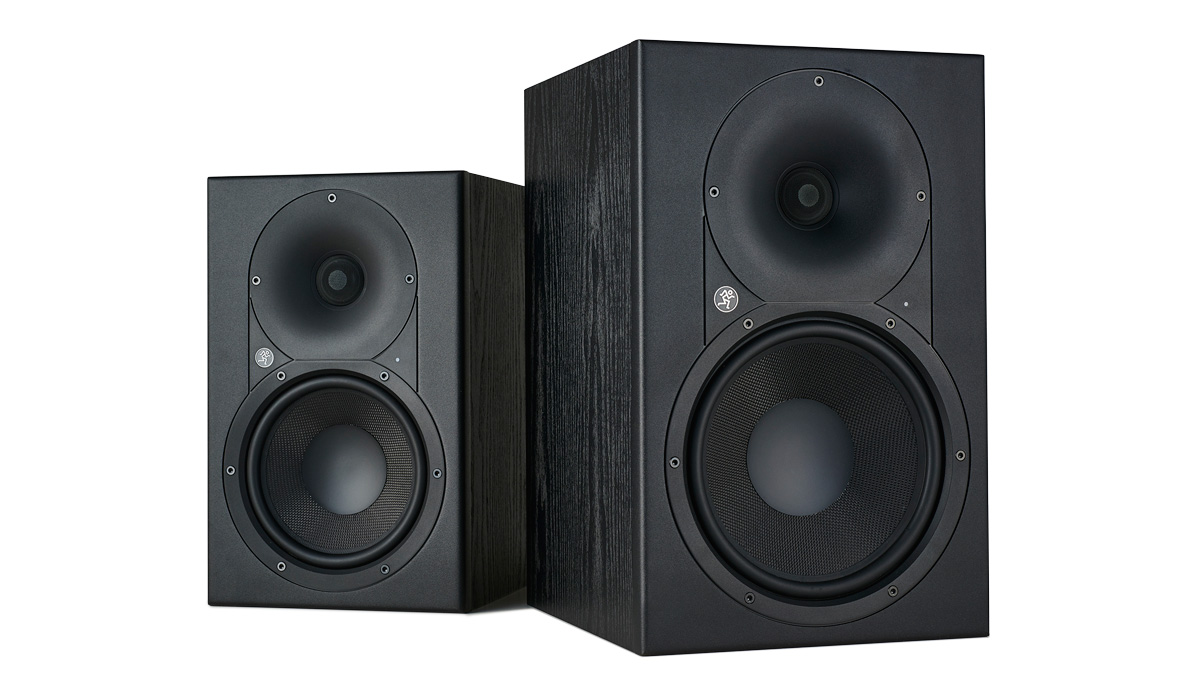MusicRadar Verdict
The XRs successfully fill a gap in the Mackie monitor range, combining solid construction with an affordable price tag.
Pros
- +
Excellent build quality.
- +
Effective onboard room and EQ adjustment options.
- +
Bespoke foam isolation pads included.
Cons
- -
XR824 has a less cohesive midrange.
MusicRadar's got your back
Mackie’s HR Series professional studio monitors have over 20 years on the clock and many fans, but at over a grand a pair for the six-inch HR624 Mk2, they’re not cheap.
The new XR series shaves roughly a third off that price tag and delivers a new rear-ported design with class D amplification (bear in mind the HRs use a passive radiator panel and class AB amps).
Available in both 6.5" and 8" configurations, the XR624 and XR824 models share many features including amplifier output (100Watts LF and 60Watts HF), HF shelving EQ (+2dB, 0dB and -2dB at 10kHz), optional subwoofer 80Hz low-cut filter, input sensitivity trim pot, twin balance inputs on XLR and TRS jack, Kevlar woofers and a 1" black anodised aluminium tweeter. They also both include the Acoustic Space option, which adjusts a 100Hz shelving EQ to compensate for wall proximity.
The XR824 quotes a better low frequency response to 36Hz, (the XR624 is 45Hz) and at almost 10cm taller and over 15kg, the HR824s are also considerably larger and heavier. To compensate for the larger LF driver, the XR824 crossover is slightly lower at 2.2kHz rather than 2.7kHz for the XR624. Rounding things off, both designs include optional auto power off after 15 minutes of idle time, and both thermal and overload protection.
The new XR series shaves roughly a third off that price tag and delivers a new rear-ported design with class D amplification
As we’ve come to expect from Mackie, the XRs are solidly put together, and with their logarithmic tweeter waveguide and wood effect finish, they’re visually reminiscent of Mackie’s original HR design. Both monitors include basic foam isolation pads and stick-on rubber feet.
We’re not particularly fond of super-bright monitors, but in both cases we went for the +2dB HF EQ setting, and although the flat option was also workable, to my ears the -2dB setting is simply too dark.
Both pairs sound reasonably forward in the midrange, which is great for detailed mixing work and balancing key lead elements, and both deliver good stereo imaging with a broad listening sweet spot.
Want all the hottest music and gear news, reviews, deals, features and more, direct to your inbox? Sign up here.
It’s the key midrange frequencies where the two models sound most different - the XR824 sounding a little disjointed, and switching over to the XR624s only hammers this point home. Despite its less impressive bass extension, the XR624 is particularly revealing for guitar-heavy tracks, and this can be a tough test for even the best monitors.
Overall, we’d be happy working on either of the XRs, and although the XR824 is a bit more vibey, for us the more compact and focused XR624 is the better sounding model.
Jon is a London based platinum award winning mixer, producer, composer and club remixer with a diverse CV that spans dance, pop, rock and music for media. He’s also a long term contributor to MusicRadar's music technology tutorials and reviews. Whether working alone or collaborating he usually handles final mixdowns, so you’ll also find MusicRadar peppered with his handy mixing tips.

